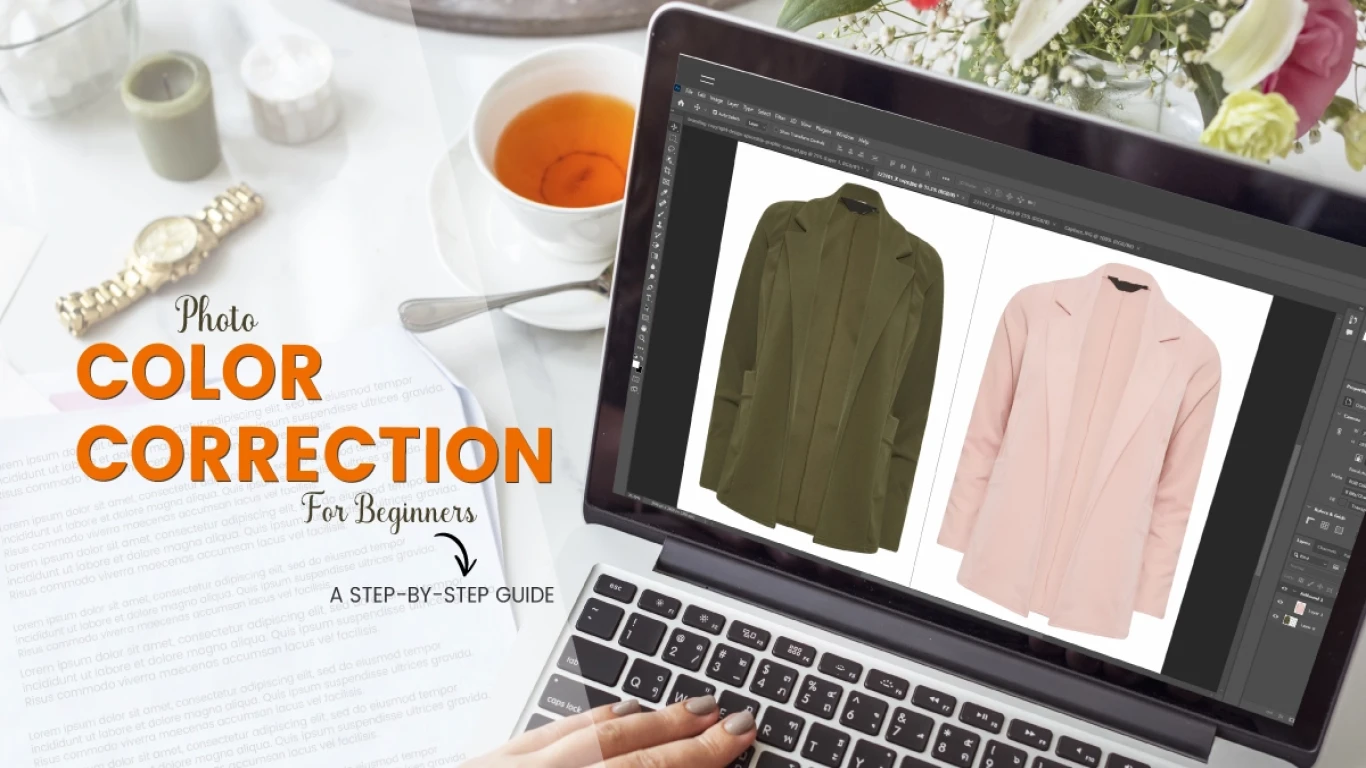Photo Color Correction for Beginners: A Step-by-Step Guide
by Delwar Hussain / Last Update: September 18, 2023
When it comes to creating stunning photographs, color is everything. Color can evoke emotion, set a mood, and communicate a message. However, capturing the perfect color balance in your photos can be challenging, especially when working with different lighting conditions, camera settings, and other variables.
This is where color correction or color grading comes in. Photo Color correction is the process of adjusting the colors in an image to make them appear more natural or visually appealing. By correcting the color balance, saturation, and other color properties, you can enhance your photos’ overall look and feel.
In this article, we’ll take a closer look at what color correction is, why it’s important, and provide a step-by-step guide on how to correct the color on your photos. Whether you’re a professional photographer or a beginner just starting, this “photo color correction for beginners” guide will help you take your photos to the next level. So let’s get started!
Preparing for Color Correction
Before you dive into color correction, it’s important to take some time to prepare. This will help ensure you have everything you need to get the best results and that your photos are safe and secure throughout the process. Here are some steps you can take to prepare for color correction:
Gathering The Necessary Tools and Software
To perform color correction, you’ll need the right color correction tools and software. This may include some advanced tools such as Adobe Photoshop, Adobe Premiere, Lightroom, or GIMP. You’ll also need a calibrated monitor to ensure the colors you see on your screen are accurate.
Preparing Your Workspace
Having a clean and organized workspace when performing color correction is important. This will help you stay focused and avoid distractions. Ensure your desk is clean and free of clutter and your monitor is positioned at the correct height and angle.
Making Backup Copies of Your Photos
Color correction involves changing your original photos, so it’s important to make backup copies before you begin. This will ensure that you have a safe copy of your photos in case anything goes wrong during the editing process. You can make backup copies by copying your photos to an external hard drive, cloud storage service, or another secure location.
By preparing for color correction, you’ll be better equipped to achieve the best possible results. So take your time and ensure you have everything you need before editing your photos.
Assessing the Photo
Before you begin to correct the colors in your photos, it’s important to assess them and identify any issues that need to be addressed. Here are some key steps to take when assessing your photos:
Identifying color issues
Start by looking at the colors in your photo and identifying any issues that need to be corrected. Common color issues include incorrect white balance, color casts, and saturation levels. Pay attention to skin tones, often the most important colors in portrait photography.
Understanding color theory and color balance
To effectively correct color issues, it’s important to have a basic understanding of color theory and color balance. This includes understanding the color panel, color wheel, color temperature, complementary colors, and how different colors interact. You will have to have a good command of many factors like color values, primary colors, individual color channels, color grades, color profiles, color settings, color tint, and preset filters. You should also be familiar with color balance, lumetri color scope, and how to adjust it in your photo editing software.
Evaluating exposure
In addition to color issues, you should also evaluate your photo’s exposure. Exposure refers to the amount of light that enters the camera and affects the image’s brightness. If your photo is overexposed or underexposed, it can also affect the colors in the image. Use your photo editing software to adjust the exposure as needed.
By assessing your photos before you begin color correction, you’ll be able to identify any issues that need to be corrected and make more targeted adjustments to improve your photos’ overall look and feel. So take your time and carefully evaluate your photos before editing them.
Color Correction Techniques
Now that you’ve assessed your photo and identified any color issues, it’s time to begin correcting them. Here are some common color correction techniques/tools that you will need:
Curves
Curves are a powerful tool for adjusting your photos’ tonal range and color balance. You can use curves to adjust the brightness and contrast of specific tonal ranges, as well as to correct color casts and adjust the overall color balance.
Levels
Levels are another tool you can use to adjust your photos’ tonal range and color balance. They allow you to adjust your photo’s shadows, mid-tones, and highlights separately, which can help you achieve more accurate and natural-looking colors.
Color Balance
Color balance allows you to adjust the overall color balance of your photo by adjusting the balance between the red, green, and blue channels. You can use the color balance to correct color casts or to achieve a specific color balance for artistic effect.
Hue/Saturation
Hue/Saturation allows you to adjust the hue, saturation, and lightness of individual colors in your photo. This can be useful for correcting color casts, as well as for achieving specific color effects.
Color Lookup Tables (LUTs)
Color lookup tables (LUTs) are pre-made color correction presets you can apply to your photos. They can be a quick and easy way to achieve a specific look or style without manually adjusting the colors yourself.
Using these color correction techniques, you can achieve more accurate, natural-looking colors in your photos. Experiment with different techniques and find the best ones for your photos and editing style.
Fine-Tuning the Image
Once you’ve corrected the colors in your photo, you can fine-tune it further to achieve the desired look and feel. Here are some techniques that you can use to fine-tune your image:
Sharpening The Image
Sharpening your image can help bring out details and make it appear crisp and clear. Use your photo editing software’s sharpening tool to adjust the amount and radius of sharpening until you achieve the desired effect.
Adjusting Contrast
Adjusting the contrast can make your photo appear more dynamic and dramatic. Use your photo editing software’s contrast adjustment layers to adjust the brightness and darkness of specific tonal ranges, or use the levels tool to adjust the overall contrast of your photo.
Enhancing Colors
Enhancing your photo’s colors can make it appear more vibrant and eye-catching. Use your photo editing software’s saturation tool to adjust the overall saturation of your photo, or use the hue/saturation tool to adjust the saturation of individual colors.
Removing Unwanted Elements
Finally, remove any unwanted elements from your photo. This could include blemishes on a person’s skin, distracting background elements, or other visual distractions. Use your photo editing software’s cloning or healing tool to remove these elements and create a cleaner, more visually appealing photo.
You can create a more polished and professional-looking final image by fine-tuning your photo using these techniques. Take your time and experiment with different settings and adjustments until you achieve the desired effect.
Key Takeaways
In conclusion, color correction is an essential step in photo editing that can help you achieve more accurate and natural-looking colors in your photos. Here’s a quick recap of the step-by-step process:
- Prepare your workspace and gather the necessary tools and software.
- Assess your photo for color issues and evaluate exposure.
- Use color correction techniques such as curves, levels, color balance, hue/saturation, and color lookup tables to correct any color issues.
- Fine-tune your image by adjusting sharpness, contrast, and color and removing any unwanted elements.
- Remember, color correction is a skill that takes practice and experimentation to master. Don’t be afraid to try different techniques and settings to see what works best for your photos and editing style. The more you practice, the more comfortable you’ll become with the process.
If you’re looking for additional resources to learn more about photo editing and color correction, plenty of great tutorials and online courses are available. Consider checking out some of the many online resources or through your photo editing software’s help center. Hope this “Photo Color Correction for Beginners” guide has helped you to get a grip of photo color correction.
Article by
Delwar Hussain
Image Processing Expert, Photography Enthusiast, Blogger, COO at Cutting Edger
Over 18 years of experience in Graphic Design, Image Editing, 3D Modeling/Rendering and Digital Products, I have got opportunity to work with different local and multi-national companies, among of them GraphicPeople, Modern Herbal Group and British Broad Casting (BBC) can be highlighted. During my career I have worked with Coca-Cola, Turkish Airlines, Singapore British American Tobacco, Dell, Pfizer Pharmaceuticals, Indeed.com, International Hotel Group (IHG), Santander Bank, Quad Inc. Adidas, Nike, Dove etc. Having 18 years of experience and being a Co-Founder and COO of Cutting Edger is providing Post Production Image Editing, 3D Modeling and Rendering, Desktop Publishing and Digital Products like Web Design and Development, Software Development, etc.

